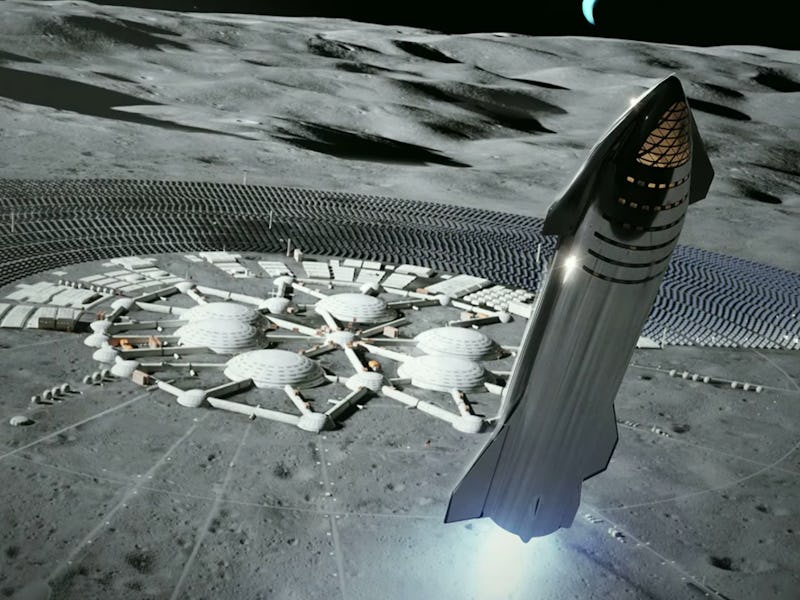SpaceX: Elon Musk explains a "big challenge" facing Starship's moon base
It won't be plain sailing.

SpaceX wants to go to the moon, but finding the resources to power a fuel depot could prove difficult.
One of the major problems could be that, unlike Mars, the moon may not hold as many resources. Elon Musk explained via Twitter Monday that the moon may lack carbon. That would mean that, unlike in Mars where the Starship could refuel by using atmosphere resources, lunar visitors would have to consider their options.
“Big challenge for Starship refueling on the moon is finding sources of carbon,” Musk explained on Twitter. “Probably some pretty big deposits in craters from meteorites. Same goes for hydrogen & oxygen, also in (shadowed) craters.”
SpaceX and Musk have regularly touted their long-term ambition to build a city on Mars by 2050. But solving the issues around a moon base could provide astronauts with a base that takes a matter of days to reach from Earth, as opposed to the matter of months it would take to reach Mars.
As the company continues its quest to develop humanity into a multi-planetary species, solving the moon issue could provide vital experience for future expansion.
SpaceX lunar base: Why carbon is so important
SpaceX is currently developing the Starship, a fully reusable stainless steel rocket capable of transporting 100 people at a time to Mars and beyond. It’s powered by the Raptor engine that uses liquid oxygen and methane to fly, unlike the Merlin engines that use harder-to-find rocket propellant.
This is crucial to SpaceX’s ambitions because it means the company could build a propellant depot in space to refuel and return home, or even venture out further. The idea is that, by supplying carbon dioxide and water, the astronauts can use chemical processes to create more fuel.
Musk's explanation of using carbon capture to make rocket fuel.
This makes sense for Mars, where carbon dioxide is in abundance in the atmosphere and water is stored in ice. But what about the moon?
Unlike Mars, the moon has no atmosphere. That makes it harder for water to remain on the surface, as it can disappear as it evaporates. However, NASA announced in August 2018 that the moon has some water ice at the poles, where temperatures never move past -250 degrees Fahrenheit. Water has also been detected below the surface.
With water present and Musk floating the idea of carbon hidden below the surface, a propellant depot should be a lot more straightforward, right? Perhaps not. Experts have questioned whether a mine on the moon could work, and how long it would take to establish.
“Here on the Earth, to set up a mine, it can take 20 years — and that’s on the Earth,” Phil Metzger, a planetary physicist at the University of Central Florida, told The Verge earlier this month. “So when you talk about setting up a mine on the moon, it’s harder, especially because we have less understanding of the resource, and we have zero experience in doing mining operations in that environment.”
SpaceX lunar base: When could it arrive?
SpaceX has shown more interest in establishing a Mars colony instead of the moon. However, at the Boca Chica facility press event at the end of September, the company revealed an impressive rendering of what a moon base could look like.
An artist's rendering of the SpaceX starship near a base on the moon.
NASA, on the other hand, has expressed stronger interest. It hopes to send humans to the moon and establish a lunar base in five years’ time. That’s a deadline that has been described as “extremely tight” by Milt Windler, one of the Apollo 13 flight directors, in an interview with Inverse this July.
When humans do reach the surface, they could live a relatively comfortable life. A Mars habitat concept produced this month showed how, in 150 years’ time, more permanent settlements could provide Earth-like amenities below the surface.